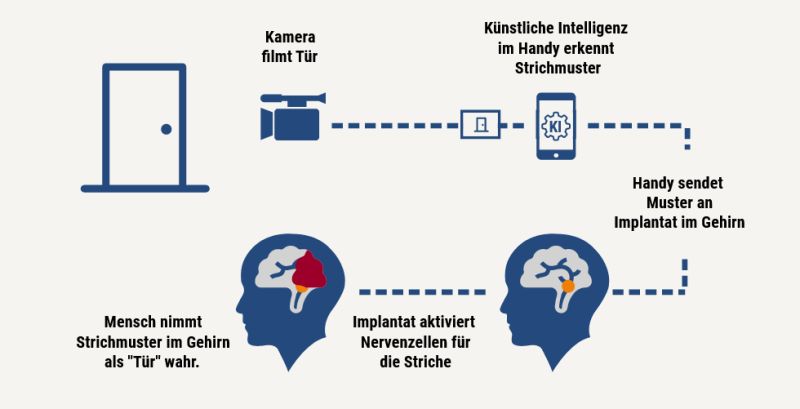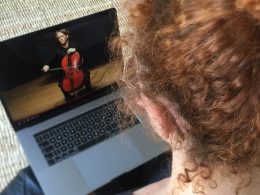The "I See" project sounds like science fiction: researchers in Bremen are working on giving blind people visual impressions. This is to become a reality with artificial intelligence and brain implants; virtual reality also plays a role in the data collection of this highly exciting project.
In fact, the aim is not to enable blind people to see like people with normal vision. Rather, physicists David Rotermund and Udo Ernst from the University of Bremen are working on enabling blind people to perceive visual impressions, such as outlines. This should enable blind people to orientate themselves in new, unfamiliar spaces: for example, to perceive a door or a cup and be able to grasp it. To this end, Bremen project managers Rotermund and Ernst have launched the "I See" project together with researchers from Bochum, Lausanne in Switzerland and Montreal in Canada.
Into the brain via camera
In order for the whole thing to work, the online human will have to use a camera to record his surroundings in future. For example, they record a door. The camera immediately sends the images to a computer that has already learnt to translate such images into the language of the brain - in other words, into electrical impulses with a specific pattern. And these impulse patterns are transmitted to the brain via a so-called brain-computer interface. There they then stimulate precisely those areas, or rather nerve cells, that normally represent curves and lines. People do not actually see a door, as their eyes cannot see - but they perceive lines in the brain that form a door frame.
VR as a part of data collection
-
- The Swiss researchers ask blind people which objects are important to them. Is it the door frame, a table or a cup? The visual prosthesis is simulated in a virtual reality environment with test subjects with normal vision: People are shown a line drawing and then tested to see whether this is enough for them to find their way around the room.
- Brain measurements are carried out on test subjects in an MRI scanner in Lausanne. The researchers find out which electrical impulses are triggered by the objects. What does the impulse pattern in the brain look like for a table or a door frame?
- "We also need experiments on animals," explain the scientists. In Bochum, mice are being used to investigate how the implant can introduce as much information as possible into the brain with the lowest possible current. Building on and complementing this, electrodes are implanted in two monkeys in Montreal and electrical impulses are triggered. The monkeys will then indicate whether they perceive lines or curves, for example.
After the initial successes, many more steps will be necessary before a product that can actually be used is ready. Electrical engineers are working to ensure that the prosthesis is robust and durable and is not destroyed in the salt water of the brain. According to the Bremen researchers, the transfer of the technology from animal experiments to humans is particularly complex. Safety tests on the implant will then take up to ten years.
Source: butenunbinnen









